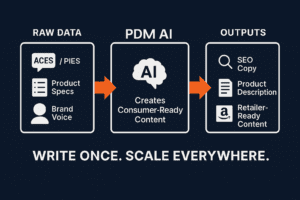New research from Microsoft reveals that e-commerce brands have a mere eight seconds to capture a reader’s attention before they move on. This presents a significant challenge for companies in the automotive aftermarket space, where the time to convince a shopper to click through is extremely limited. Selling complex automotive products, which may be compatible with various makes and models, adds to the challenge. However, there are effective strategies to convert casual browsers into buyers.
Crafting compelling product titles is one of the most effective methods to grab a reader’s crucial attention. By doing so, companies can sell their products even before the buyer clicks through for more details.
Let’s explore the five best tips for crafting product titles that get results.
Understand Your Audience
While this point is essential in any industry, understanding your audience is vital in the automotive aftermarket industry.
If you’re going to sell to car enthusiasts, you need to speak their language. By deeply understanding your audience’s needs, preferences, and search habits, you can tailor the language and keywords in your product titles to resonate more effectively with potential buyers.
Consider the following examples that illustrate the importance of audience knowledge:
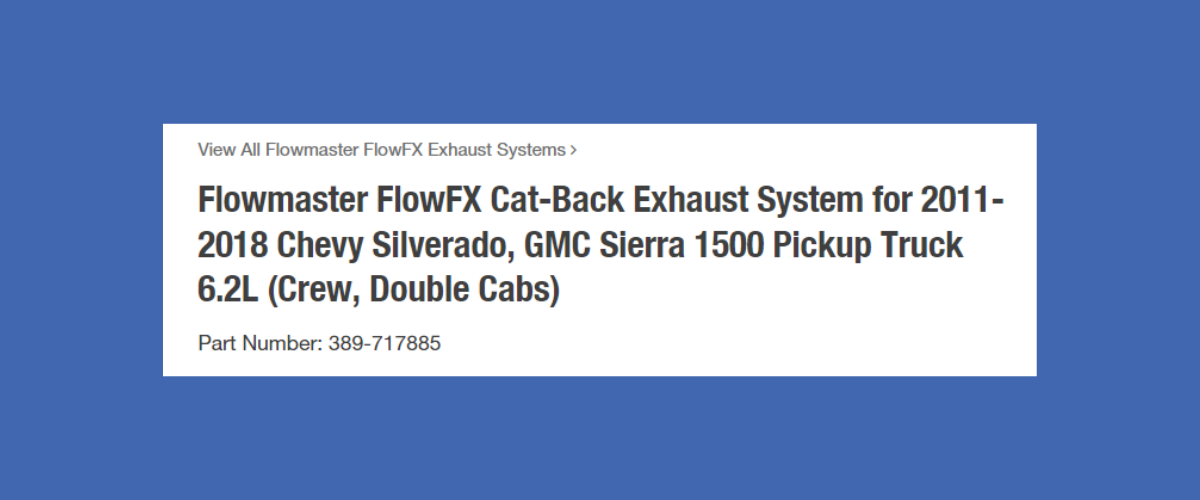
This Flowmaster exhaust product from Jegs.com offers all the technical lingo that a car enthusiast would understand and gives fitment information right in the product title.
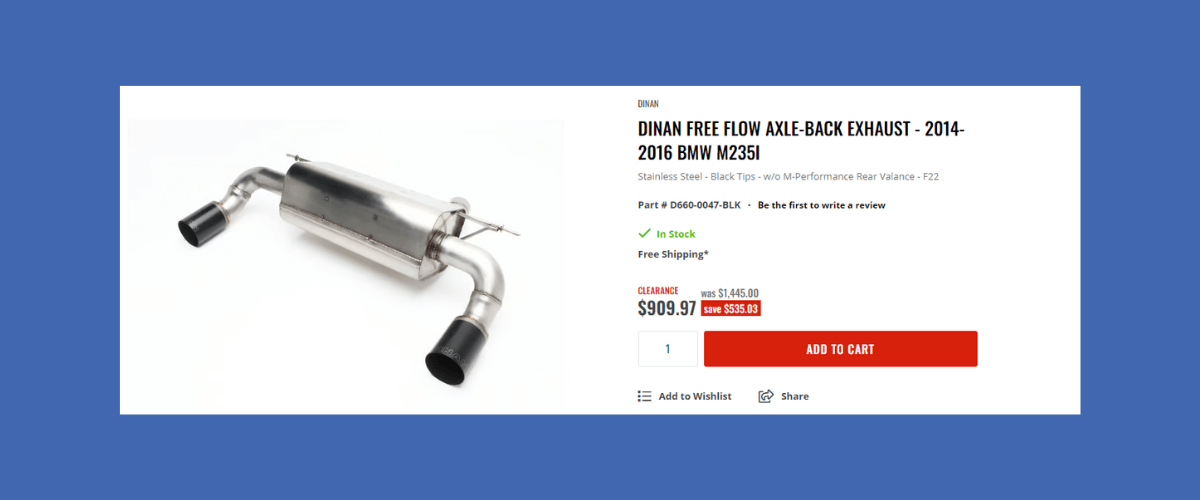
This product title from Dinan (a Holley company) offers less information but includes a crucial bit of copy, “Free Flow,” showing that this is a high-performance exhaust.
Conducting audience research is vital to help figure out the right blend of titles. Analyze customer queries, sift through feedback, and study competitor strategies to gain insights into your audience’s values. This knowledge allows you to craft product titles that capture attention and speak directly to car enthusiasts’ desires and needs, making your offerings more compelling and increasing the likelihood of conversions.
Use Relevant Keywords
For automotive aftermarket companies, keywords enhance search visibility on e-commerce platforms and search engines alike.
Incorporating relevant keywords into your titles ensures that your offerings are more likely to appear in search results when customers look for specific automotive parts and accessories. Once again, this Flowmaster product listing gets it right by telling search engines what vehicle that particular exhaust system actually fits:
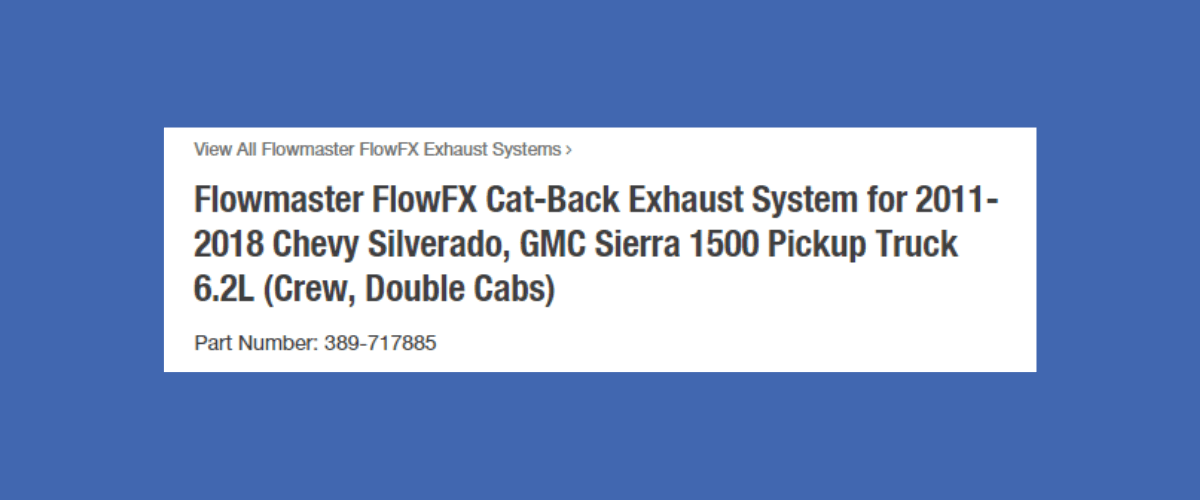
Selecting the right keywords requires understanding the terminology your customers use. This involves researching search trends, analyzing the language in customer inquiries, and even monitoring how competitors describe similar products.
Utilizing tools like Google Keyword Planner or industry-specific search analytics can provide valuable insights into the most effective keywords. Choosing keywords that align with customer search habits can significantly improve your products’ visibility, driving more traffic to your listings and increasing sales opportunities.
Be Clear and Descriptive
One of the biggest challenges for companies in the automotive aftermarket space is crafting titles that offer a balance between clarity and creativity.
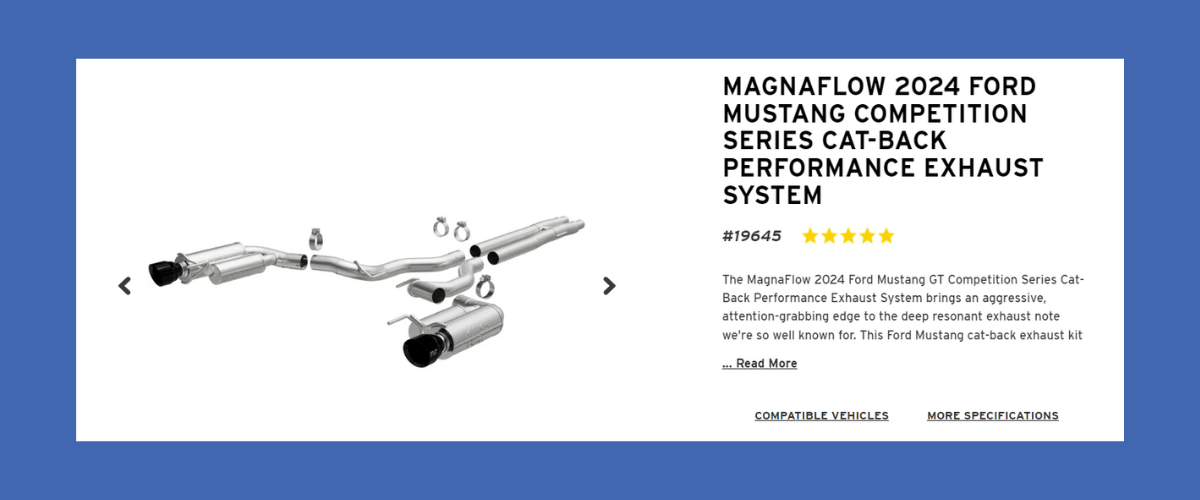
This product title from Magnaflow does an excellent job of balancing details with some carefully placed selling language, such as “Performance” and “Competition Series,” that shows off the high-performance nature of this system. Plus, they manage to squeeze in the make and model to ensure that search engines can properly index the product.
Shoppers looking for the highest-quality Mustang exhaust systems will instantly connect the premium price with a high-end exhaust system based on the effect that those simple keyword additions bring. Throw in the Magnaflow name, and you have a recipe for a winning product title.
Sharp and Concise Language
Short and sharp product titles in the automotive aftermarket grab attention and keep customers hooked. Conciseness boosts readability, helping your products stand out in a sea of options. The trick? Pack the punch with essential details—think part type, brand, and compatibility—while trimming the fat.
Lean on abbreviations and industry lingo, but keep it clear. This strategy ensures your titles hit hard with info, making it a breeze for customers to spot what they need, enhancing their experience, and building loyalty. Keep it brief. Make it count.
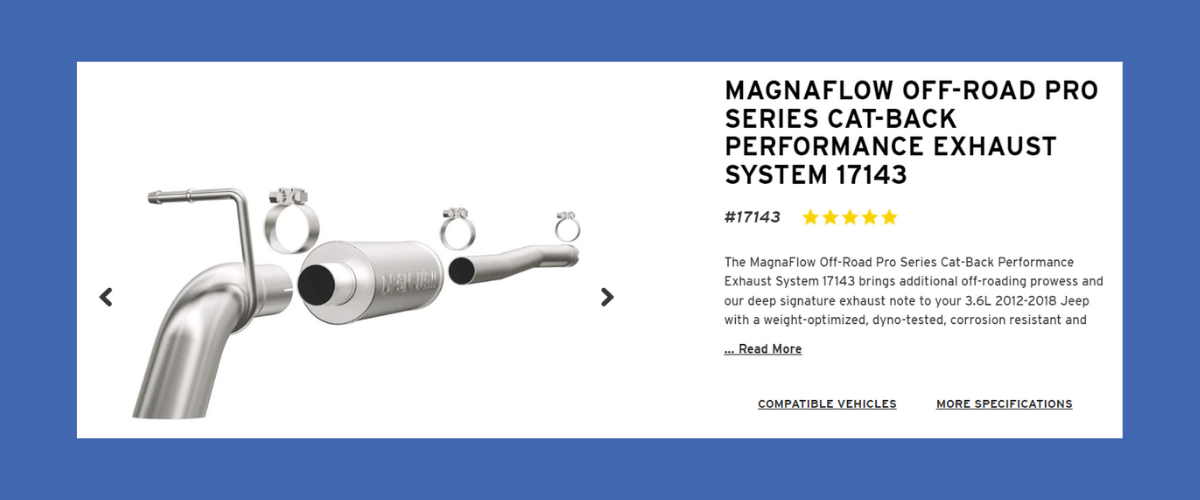
This description from Magnaflow does an excellent job explaining that it is not only an exhaust system but is specifically designed for off-road vehicles and offers a high level of performance.
Highlight Unique Value Propositions
Product titles are prime real estate for showcasing what sets your offerings apart.
Highlight critical differentiators like superior quality, unique features, or exclusivity directly in the title to immediately catch the eye of potential buyers. Use descriptors like “Premium,” “Exclusive,” or “Advanced” to signal quality or uniqueness, and specify standout features like “Long-Lasting Durability” or “Eco-Friendly.”

This description from Go Rhino does a fantastic job of quickly telling us that these side steps are not only Xtreme (with a capital X) but are offered as a complete set with brackets. This language shows buyers that Go Rhino is not nickel and diming their customers while providing a premium product for off-roaders.
A Note On Proof of Concept Testing
By crafting multiple versions of a title for the same product, you can experiment to see which one captures more attention, drives higher traffic, and converts better.
Utilize analytics tools to track the performance of each title variation, focusing on key metrics such as click-through rates, conversion rates, and engagement levels. This data-driven approach allows you to refine your titles based on actual customer behavior, ensuring your product listings are optimized for maximum impact. Remember, the goal is continuous improvement; as market trends and consumer preferences evolve, so should your product titles.
By staying agile and responsive to the insights garnered from A/B testing and analytics, you can keep your product listings fresh and compelling, leading to sustained growth and success.
Revolutionize Your Business with PDM Automotive
PDM Automotive transforms how automotive businesses venture into eCommerce, streamlining the path to a successful omnichannel strategy by seamlessly integrating accurate data with consumer-facing digital platforms.
The edge PDM Automotive offers lies in its advanced PIM software and tailor-made APIs, pushing the boundaries of product management. These innovations provide a perfect, real-time sync of extensive product databases with leading e-commerce platforms such as Shopify or BigCommerce, crafting a smoother, more intuitive shopping journey. Customers enjoy a tailored search experience, quickly finding the needed parts with vehicle-specific filtering.
Reach out to PDM Automotive to elevate your automotive aftermarket business into the digital era.

More Resources
Elevate Your Brand in the Automotive Aftermarket With These Content Management Strategies



